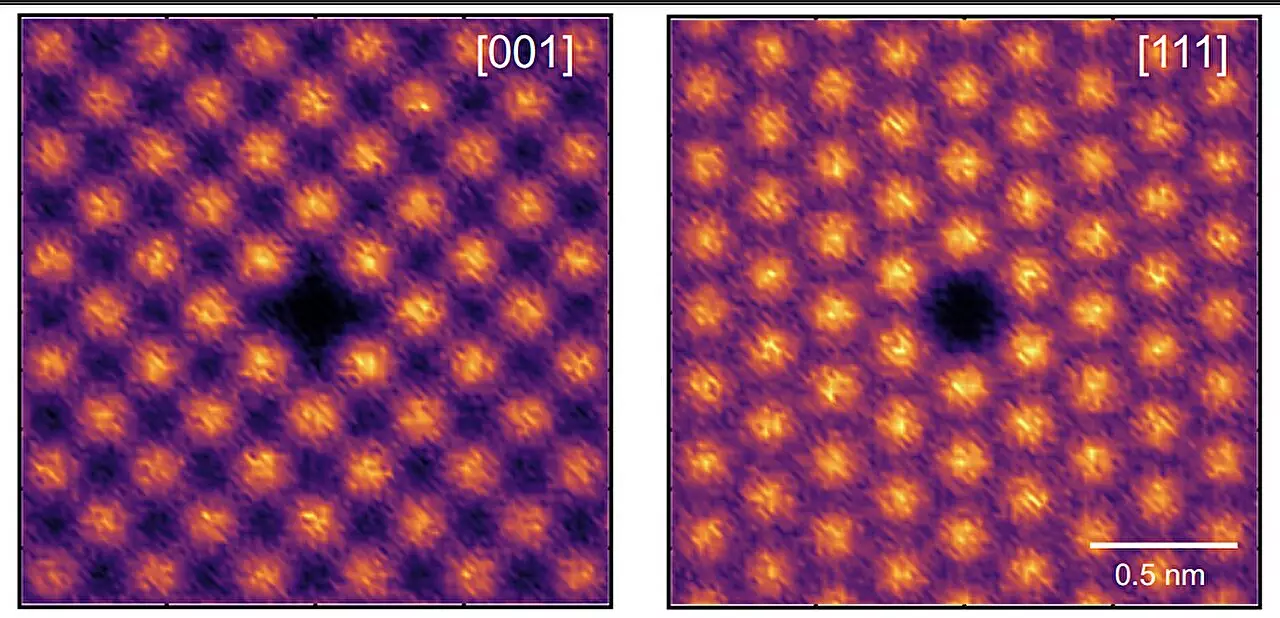In a remarkable advancement for material science, a research team led by Professor Simon Ringer at the University of Sydney has unveiled a cutting-edge microscopy technique that allows for the detection of subtle variations in the atomic architecture of crystalline materials. This breakthrough is poised to significantly enhance our understanding of material properties, with far-reaching implications for diverse industries including aerospace and electronics. With the potential to create stronger, lighter alloys and more efficient semiconductors, this innovative technique opens a window into the atomic-level intricacies that dictate material behavior.
Understanding Short-Range Order: The Key to Material Innovation
Central to this new discovery is the notion of short-range order (SRO)—a concept that refers to the local arrangements of atoms within a crystalline structure. SRO is crucial for the development of advanced materials, akin to having a “materials genome” that governs the properties and functionalities of these substances. What makes this discovery landmark is the realization that different atomic arrangements can significantly influence properties such as electronic conductivity, magnetism, and mechanical strength.
Historically, researchers have faced significant challenges in measuring SRO due to the atomic scale involved; conventional microscopy techniques often fall short of revealing such minuscule details. However, with the introduction of atom probe tomography (APT), the team at the University of Sydney has managed to overcome these limitations, providing a powerful tool for material scientists to decode the atomic relationships in materials.
The Implications for Aerospace and Electronics
The potential applications of this research extend deeply into the realm of aerospace and electronic industries. For example, the study specifically zeroed in on high entropy alloys, which have garnered significant interest for their superior high-temperature strength and resistance to radiation damage—attributes highly sought after in environments like jet engines and nuclear reactors. By employing APT, the researchers were able to observe and quantify how different processing conditions can alter SRO, offering valuable insights into tailoring materials for specific applications.
Professor Ringer emphasized the revolutionary nature of this research: “Our goal was not merely to identify atomic arrangements but to quantify them, giving us the capability to design materials atom by atom.” This level of customization could lead to unprecedented advancements in material performance, providing a direct trajectory toward innovations that could transform entire industries.
The Role of Advanced Data Science
An integral aspect of this research lies in the application of advanced data science techniques. By leveraging data gathered through APT, the team has developed a computational framework for analyzing SRO. This allows researchers to simulate and predict material behavior with unprecedented accuracy. As Dr. Andrew Breen pointed out, the method not only pioneers a new angle for understanding SRO in multicomponent alloys but also establishes a sensitivity analysis that clarifies the scenarios in which these measurements are valid.
This systematic approach to understanding SRO ensures that material engineers can confidently utilize the insights gathered to facilitate informed decisions regarding material design. Such advancements in computational modeling could significantly cut down the trial-and-error phase of material development, allowing for quicker iterations and more effective engineered solutions.
An Eye Towards Sustainability
In an era where sustainability is a paramount concern, this innovative research aligns seamlessly with the global push toward eco-friendly technologies. The ability to engineer materials that are not only high-performing but also cost-effective and sustainable could lead to developments such as energy-efficient electronics and lightweight vehicles with reduced fuel consumption. By designing materials with specific properties from the atomic level, researchers can produce resources that are both functional and environmentally responsible, addressing two critical needs of modern society.
The breakthroughs introduced by the University of Sydney team signify a pivotal moment in material science. By unlocking the potential of short-range order through advanced microscopy techniques, this research reshapes our understanding of atomic interactions within materials. These advancements not only promise enhanced material properties but also herald a new approach to designing cutting-edge technologies. It reveals that the future may indeed lie in the hands of material engineers who can manipulate atomic structures to achieve powerful, sustainable solutions that meet the demands of tomorrow. The implications of this research stretch across industries, marking the dawn of a new era in materials engineering.


Leave a Reply